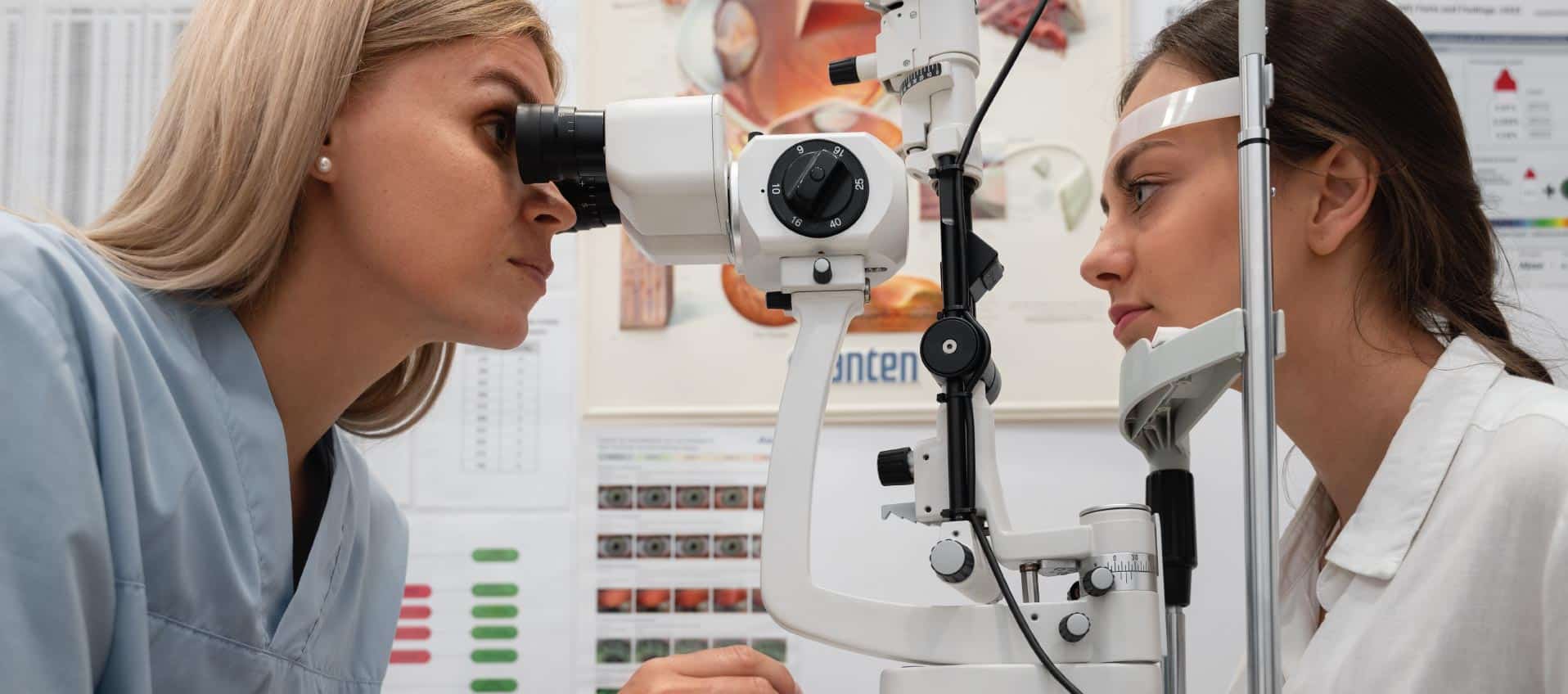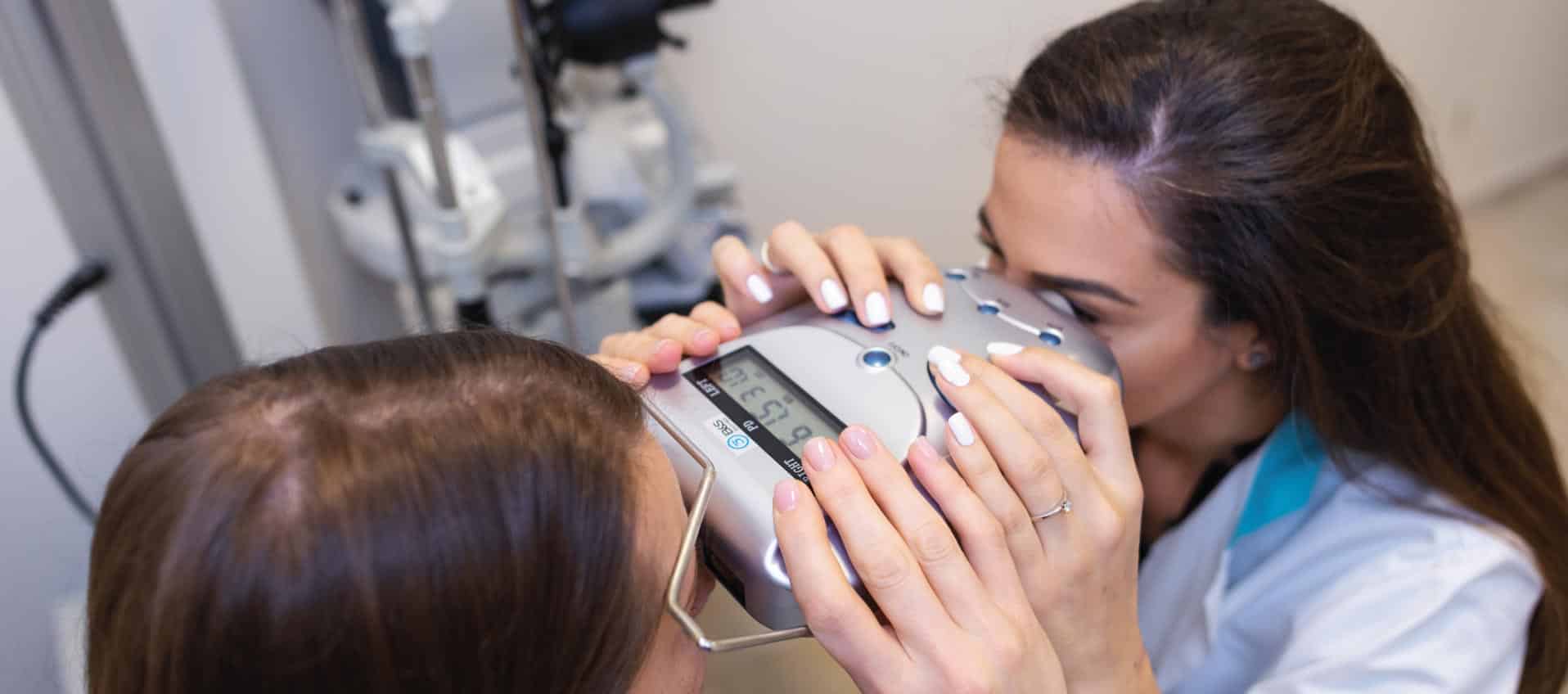Table of Contents
Urgent Care Eye in Odessa, Texas – Priority ER 24/7
Did you know that over 2.4 million eye injuries occur annually in the United States, with workplace incidents accounting for nearly 20,000 cases requiring immediate medical attention? When facing sudden eye problems or injuries, urgent care eye services at Priority ER provide the specialized treatment necessary to protect your vision and prevent lasting damage to one of your most vital senses.
Our emergency room care facility at 3800 E 42nd St, Suite 105, Odessa, TX 79762, offers comprehensive urgent eye care 24/7, serving residents of Odessa, West Odessa, Midland, Gardendale, Greenwood, and surrounding communities throughout Ector and Midland Counties. Unlike standard urgent care clinics with limited ophthalmologic capabilities, Priority ER maintains specialized diagnostic equipment and board-certified emergency physicians trained in managing complex eye emergencies.
Urgent eye care requires both speed and precision. Many patients underestimate the severity of eye symptoms, but conditions like acute angle-closure glaucoma or retinal artery occlusion have treatment windows measured in hours, not days. Immediate evaluation can preserve vision that would otherwise be permanently lost.
Understanding Urgent Eye Care Conditions
Urgent care eye conditions encompass a broad spectrum of injuries and diseases requiring immediate medical intervention to prevent vision loss or permanent ocular damage. In West Texas, the combination of industrial hazards, intense sunlight, and environmental factors creates unique challenges for eye health that demand accessible, round-the-clock emergency services.
Our emergency diagnostic imaging department features specialized ophthalmologic equipment including digital slit lamps, tonometry devices, and high-resolution imaging systems. These advanced tools enable our emergency physicians to rapidly diagnose conditions ranging from simple foreign body injuries to complex retinal emergencies requiring immediate specialist referral.

Vision-Threatening Emergencies
Vision-threatening emergencies demand immediate recognition and treatment to prevent irreversible damage. Conditions such as central retinal artery occlusion, often called an “eye stroke,” require treatment within 90 minutes for any chance of vision recovery, making immediate access to emergency care crucial.
A 52-year-old oil field supervisor from Goldsmith presented with sudden, painless vision loss in his left eye. Immediate evaluation revealed central retinal artery occlusion. Through rapid intervention including ocular massage and medications to lower intraocular pressure, partial vision was restored within the critical treatment window.
A 52-year-old oil field supervisor from Goldsmith presented with sudden, painless vision loss in his left eye. Immediate evaluation revealed central retinal artery occlusion. Through rapid intervention including ocular massage and medications to lower intraocular pressure, partial vision was restored within the critical treatment window.
Acute Glaucoma Recognition
Acute angle-closure glaucoma presents with severe eye pain, headache, nausea, and rainbow halos around lights. This medical emergency requires immediate pressure reduction to prevent optic nerve damage and permanent vision loss. Our emergency physicians are trained to recognize and initiate treatment for this condition immediately upon arrival.
Treatment involves multiple medications to rapidly lower intraocular pressure, including topical and systemic agents. Our laboratory testing services support treatment by monitoring systemic effects of medications and identifying underlying conditions that may complicate therapy.
Emergency Pressure Reduction Protocols
Our emergency protocols for acute glaucoma include sequential medication administration, starting with topical beta-blockers and alpha-agonists, followed by systemic carbonic anhydrase inhibitors. Intravenous mannitol may be administered for severe cases, with careful monitoring of fluid and electrolyte balance throughout treatment.
Workplace Eye Injuries in West Texas
The Permian Basin’s industrial landscape presents unique occupational hazards for eye health. Oil field workers, welders, and construction personnel face daily risks from high-pressure equipment, chemical exposures, and flying debris that make workplace eye injuries a leading cause of urgent care visits in our region.
Prevention remains paramount, yet when injuries occur, immediate professional evaluation prevents complications. Our urgent eye care protocols address the specific injury patterns common in industrial settings, from high-pressure injection injuries to chemical burns from drilling fluids and solvents.
| Industry Sector | Common Hazards | Injury Types | Prevention Measures |
|---|---|---|---|
| Oil & Gas | High-pressure fluids, chemicals, debris | Injection injuries, chemical burns | Face shields, sealed goggles, pressure protocols |
| Construction | Dust, particles, power tools | Foreign bodies, corneal abrasions | Safety glasses, side shields, tool guards |
| Welding | UV radiation, sparks, fumes | Flash burns, foreign bodies | Welding helmets, proper ventilation |
| Agriculture | Chemicals, plant matter, equipment | Chemical exposure, trauma | Chemical goggles, machinery guards |
Diagnostic and Treatment Process
Comprehensive urgent care eye evaluation begins with systematic assessment using advanced diagnostic technologies rarely available outside hospital emergency departments. Our structured approach ensures no critical findings are missed while expediting treatment for time-sensitive conditions.
Initial triage rapidly identifies patients requiring immediate intervention, such as chemical exposures needing irrigation or penetrating injuries requiring stabilization. Following triage, our emergency eye clinic protocols guide systematic examination including visual acuity testing, pupillary assessment, and detailed anterior and posterior segment evaluation.
Modern emergency eye care has evolved dramatically with digital imaging technology. We can now capture high-resolution images of corneal injuries, document foreign body locations precisely, and share findings instantly with ophthalmology specialists for collaborative treatment planning.
Modern emergency eye care has evolved dramatically with digital imaging technology. We can now capture high-resolution images of corneal injuries, document foreign body locations precisely, and share findings instantly with ophthalmology specialists for collaborative treatment planning.
Advanced Eye Care Technology
Priority ER’s investment in cutting-edge ophthalmologic equipment ensures accurate diagnosis and optimal treatment outcomes. Our digital slit lamp microscopes provide magnified views of eye structures, revealing subtle injuries that might otherwise go undetected until complications develop.
Tonometry equipment measures intraocular pressure with precision, essential for diagnosing glaucoma and monitoring treatment response. Advanced imaging capabilities include anterior segment photography for documenting injuries and tracking healing progress, particularly valuable for workplace injury cases requiring detailed documentation.
Immediate Assessment & Stabilization
Emergency triage nurses evaluate severity, initiate chemical decontamination if needed, and fast-track critical cases. Pain management begins immediately while gathering essential history. Our late night urgent care ensures this level of care 24/7.
Diagnostic Evaluation
Systematic examination using slit lamp microscopy, visual acuity testing, intraocular pressure measurement, and specialized staining techniques reveals the full extent of injury or disease requiring treatment.
Evidence-Based Interventions
Treatment protocols address specific conditions with proven therapies including foreign body removal, infection management, pressure reduction for glaucoma, and coordination with specialists for complex cases.
Discharge & Follow-up
Comprehensive discharge planning includes medication instructions, activity restrictions, warning signs requiring return, and coordination with ophthalmologists for continued specialty care when indicated.
Rapid Triage
Immediate severity assessment and stabilization for chemical or trauma cases.
Comprehensive Exam
Detailed diagnostic evaluation using advanced imaging and examination tools.
Targeted Treatment
Specific interventions based on diagnosis, from medication to procedures.
Recovery Planning
Aftercare instructions and specialist referrals for optimal healing.
Emergency Treatment Protocols
Evidence-based protocols guide our urgent eye care interventions, ensuring consistent, high-quality treatment regardless of when patients arrive. These protocols, developed from national emergency medicine guidelines and adapted for our regional needs, address the full spectrum of eye emergencies.
Chemical Decontamination Procedures
Chemical eye injuries require immediate, continuous irrigation to prevent permanent damage. Our decontamination stations feature pH-balanced solutions and specialized Morgan lenses that provide hands-free irrigation while medical staff performs other assessments and treatments.
Duration of irrigation depends on the chemical involved and initial pH testing. Alkaline substances require extended irrigation, often 30-60 minutes or more, with periodic pH checks to ensure complete removal. Our urgent care eye protocols ensure thorough decontamination before proceeding with further treatment.
Post-Irrigation Assessment
Following chemical decontamination, comprehensive evaluation identifies the extent of ocular damage. Fluorescein staining reveals epithelial defects, while careful examination of the fornices ensures no retained chemical particles that could cause ongoing injury.

Specialized Eye Care Services
Beyond standard urgent care capabilities, Priority ER offers specialized services addressing complex eye emergencies that typically require hospital-level resources. Our comprehensive approach ensures patients receive definitive care without unnecessary transfers or delays that could compromise outcomes.
Specialized services include management of globe ruptures, orbital fractures, and severe periorbital infections requiring intravenous antibiotics. Our cardiac emergency care capabilities complement eye care for patients with systemic conditions affecting vision, such as hypertensive emergencies causing retinal hemorrhages.
Pediatric Eye Emergencies
Children present unique challenges in urgent eye care, often unable to articulate symptoms clearly or cooperate with standard examination techniques. Our pediatric-trained staff employs age-appropriate approaches ensuring accurate diagnosis while minimizing distress for young patients and their families.
A 4-year-old from Midland arrived screaming with a suspected corneal abrasion after sand exposure at a playground. Using topical anesthetic and child-friendly examination techniques, we identified and removed multiple sand particles. The child left comfortable, with parents educated on home care and follow-up needs.
A 4-year-old from Midland arrived screaming with a suspected corneal abrasion after sand exposure at a playground. Using topical anesthetic and child-friendly examination techniques, we identified and removed multiple sand particles. The child left comfortable, with parents educated on home care and follow-up needs.
Common pediatric eye emergencies include foreign bodies, conjunctivitis outbreaks in daycare settings, and trauma from toys or sports. Our pediatric emergency care protocols address these conditions with gentle, effective treatments appropriate for developing eyes.
Age-Appropriate Examination Techniques
Examining young children requires patience, creativity, and specialized equipment designed for smaller facial anatomy. We utilize pediatric speculums, age-appropriate visual acuity charts, and distraction techniques that transform potentially frightening procedures into manageable experiences.
Parents remain with children throughout evaluation and treatment, providing comfort while our staff explains each step in reassuring terms. This family-centered approach reduces anxiety and improves cooperation, leading to more accurate diagnoses and better treatment outcomes.
Medication Considerations for Children
Pediatric eye medications require careful dosing based on weight and age, with special attention to systemic absorption through nasolacrimal drainage. We provide detailed instructions for home administration, including techniques for successful eye drop installation in uncooperative children.
Complex Eye Injury Management
Severe eye injuries involving multiple structures or systemic complications demand coordinated care beyond basic urgent treatment. Priority ER’s capabilities include management of orbital fractures, globe ruptures, and cases requiring immediate surgical consultation or transfer to specialized facilities.
Our established relationships with regional ophthalmologists and oculoplastic surgeons ensure seamless care transitions when specialized intervention is needed. Direct admission capabilities to major hospitals eliminate emergency department delays, expediting definitive treatment for vision-threatening conditions.
When to Visit Urgent Care for Eye Problems
Understanding when eye symptoms require immediate evaluation versus scheduled appointments helps patients make informed decisions about seeking care. Certain symptoms always warrant emergency evaluation, while others may safely wait for regular office hours with appropriate precautions.
Red flag symptoms requiring immediate urgent care include sudden vision changes, severe eye pain, chemical exposure, foreign body sensation with vision changes, or trauma involving the eye or surrounding structures. Our 24hr urgent care availability ensures these emergencies receive prompt attention regardless of when they occur.
| Symptom Category | Examples | Urgency Level | Recommended Action |
|---|---|---|---|
| Vision Loss | Sudden blindness, curtain/veil over vision | Critical Emergency | Call 911 or immediate ER visit |
| Severe Pain | Unbearable pain with headache/nausea | Urgent Emergency | ER within 1 hour |
| Chemical Exposure | Any chemical splash to eyes | Immediate Emergency | Flush eyes, ER immediately |
| Moderate Pain | Persistent ache, light sensitivity | Urgent | Same-day urgent care visit |
| Minor Irritation | Itching, mild redness, tearing | Non-urgent | Monitor, see doctor if worsens |
| Gradual Vision Changes | Slowly worsening vision over weeks | Routine | Schedule eye exam |
Patients often delay seeking care for eye problems, hoping symptoms will resolve spontaneously. However, many serious eye conditions have narrow treatment windows. When experiencing concerning eye symptoms, it’s always better to err on the side of caution and seek immediate evaluation rather than risk permanent vision damage.
Eye Emergency? Don’t Wait – We’re Here 24/7
Priority ER provides immediate urgent care for all eye emergencies. Our specialized equipment and expert physicians are ready to protect your vision.
Time-sensitive conditions requiring immediate evaluation include symptoms suggesting retinal detachment (flashes, floaters with vision loss), acute glaucoma (severe pain with halos around lights), or vascular occlusions (sudden, painless vision loss). These conditions have limited treatment windows where intervention can preserve vision.
Less urgent conditions that still benefit from same-day evaluation include corneal abrasions, most foreign body sensations, moderate eye pain, or discharge suggesting infection. While not immediately vision-threatening, prompt treatment prevents complications and provides relief from discomfort affecting daily activities.

Weekend case: A Greenwood resident experienced sudden shower of floaters and flashing lights while driving on Highway 158. Recognizing potential retinal detachment, he came directly to Priority ER. Immediate evaluation confirmed a retinal tear, and urgent ophthalmology referral that evening saved his vision through prompt laser treatment.
Weekend case: A Greenwood resident experienced sudden shower of floaters and flashing lights while driving on Highway 158. Recognizing potential retinal detachment, he came directly to Priority ER. Immediate evaluation confirmed a retinal tear, and urgent ophthalmology referral that evening saved his vision through prompt laser treatment.
Frequently Asked Questions About Urgent Care Eye Services
| Question | Answer | Important Details |
|---|---|---|
| What eye conditions require immediate urgent care? | Vision loss, severe pain, chemical exposure, penetrating injuries | These conditions can cause permanent damage within hours without treatment |
| Do you have ophthalmology equipment at Priority ER? | Yes, including slit lamps, tonometry, and digital imaging systems | Equipment comparable to hospital emergency departments |
| Can you treat workplace eye injuries? | Yes, we specialize in occupational eye injuries common in West Texas | Direct billing to workers’ compensation; detailed documentation provided |
| What about eye emergencies in children? | Full pediatric eye emergency services with child-friendly approaches | Pediatric-trained staff and age-appropriate examination equipment |
| Do you coordinate with eye specialists? | Yes, established relationships with regional ophthalmologists | Direct admissions and urgent referrals available when needed |
| What’s the typical wait time for eye emergencies? | True emergencies seen immediately; average wait under 15 minutes | Severity-based triage ensures critical cases receive priority |
| Can you remove foreign objects from eyes? | Yes, specialized instruments for safe foreign body removal | Including embedded metal, wood, and other materials |
| Do you provide work excuses for eye injuries? | Yes, detailed documentation for employers and return-to-work planning | Specific restrictions based on injury type and job requirements |
Sources Used
- Centers for Disease Control and Prevention – Eye injury statistics and prevention guidelines
- American Academy of Emergency Medicine – Emergency eye care treatment protocols
- National Eye Institute – Vision recovery research and clinical studies
Medical Disclaimer: This article is for informational purposes only and does not constitute medical advice. The information provided should not be used for diagnosing or treating health problems or diseases. It is not a substitute for professional medical care. If you have or suspect you have a health problem, you should consult your healthcare provider. Never disregard professional medical advice or delay seeking it because of something you have read in this article.
If you are experiencing a medical emergency, call 911 immediately or visit your nearest emergency room. For urgent but non-life-threatening conditions, Priority ER is available 24/7 at (432) 552-8208 or visit us at 3800 E 42nd St, Suite 105, Odessa, TX 79762.
Conclusion
Urgent care eye services at Priority ER provide the comprehensive emergency treatment necessary to preserve vision and prevent permanent ocular damage. Our 24/7 availability, specialized diagnostic equipment, and board-certified emergency physicians ensure that residents of Odessa, West Odessa, Midland, and surrounding communities receive immediate, expert care for all eye emergencies.
When facing eye pain, vision changes, injuries, or any concerning ocular symptoms, don’t delay seeking professional evaluation. The difference between temporary discomfort and permanent vision loss often comes down to how quickly appropriate treatment begins. Call (432) 552-8208 or visit Priority ER at 3800 E 42nd St, Suite 105, Odessa, TX 79762 for immediate urgent care eye services that protect your most precious sense – your sight.